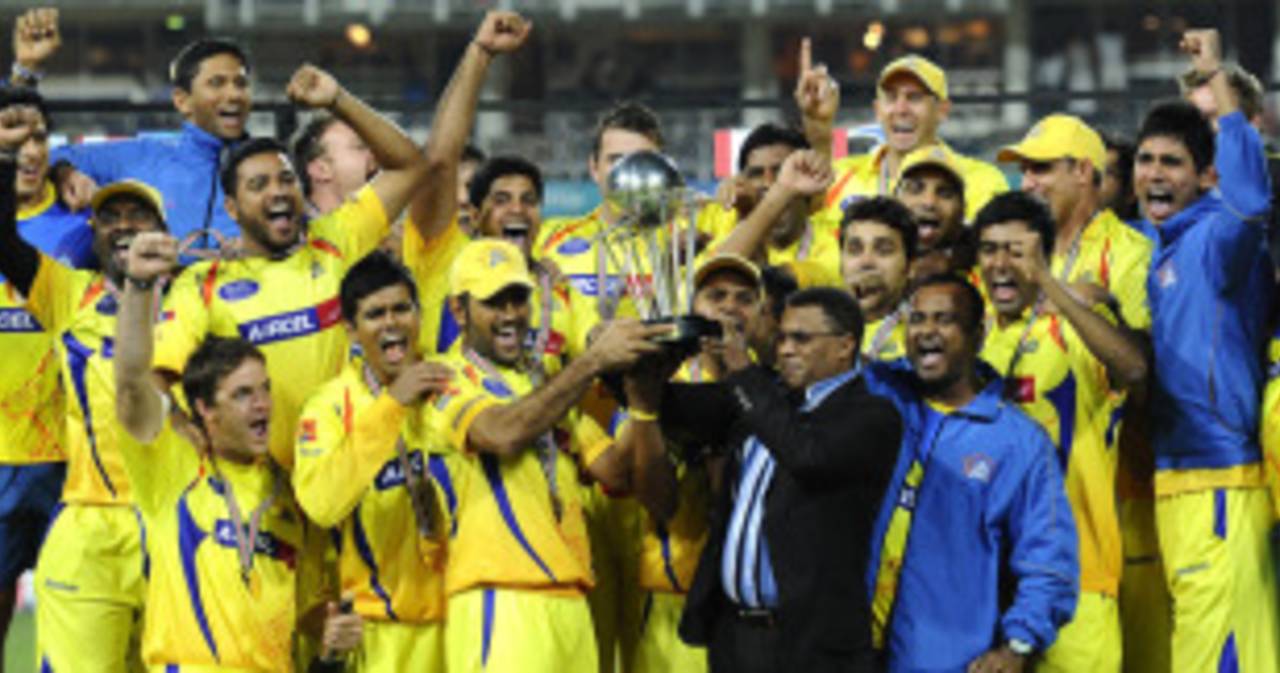IPL player retention rules tilt level playing field
The player retention process appears to undermine one of the fundamental principles of the IPL - a salary cap, and consequently a level playing field
Tariq Engineer
10-Dec-2010

The actual value of MS Dhoni's contract will not count against the Chennai Super Kings in the player auction • AFP
The Indian board's list of 12 players retained by their IPL franchises for the next two seasons is good news for those players because they can negotiate the value of their contracts with their respective teams. Yet the retention process appears to undermine one of the fundamental principles of the IPL so far - a common salary cap, and consequently a level playing field for the franchises - and also the BCCI's declared intention of a more transparent league.
The retention process allows teams to hold on to those players it deems crucial to their immediate future; these players are ruled out from the open auction to be held at some point before the next season. In return, the franchise's spending budget at the auction - a maximum of $9 million - will be cut for each player retained: $1.8 million from the cap for one player, $3.1 for two, $4 million for three and $4.5 million for the maximum of four players.
Unlike previous seasons, however, these figures do not correlate to salaries - and do not count towards the salary cap. Indeed, there is no salary cap at all. So the Chennai Super Kings, who retained four players, could hypothetically pay India captain MS Dhoni $3 million, and the other retained players $1 million each, making it a total of $6 million, but still only deduct $4.5 million from their auction pool. Likewise, Delhi Daredevils, who retained only Virender Sehwag, could pay him more or less than $1.8 million, without worrying about the impact on their ability to spend money on other players. The franchises do not have to make these contracts public either.
The process has given the franchises more flexibility, and the players the ability to negotiate their salaries without having to accept a winning auction bid as the value of their contract. Yet it seems to end the salary cap, a concept borrowed from American sport and touted by the IPL's former chairman, Lalit Modi, as a crucial part of its ethos. It is also being pushed by those seeking to reform European football, where the open system perpetuates the success of the big clubs. The cap effectively allowed the "smaller" franchise owners - Kolkata and Punjab, for example, to compete against the large business houses owning the Mumbai and Bangalore franchises.
The first auction, in 2008, had a salary cap of $5 million; the second in 2009 had a cap of $2 million. By the time of the third auction the cap had been replaced by a maximum signing amount of $750,000, with multiple bids heading into a secret tie-breaker. Two players - Shane Bond and Kieron Pollard - breached that figure; the final fee for each was never disclosed, known only to Modi and the bidders.
There is a similarity between the player-retention process followed in 2010 and the principle of icon players in the first auction - five players who were assigned to their "home" franchises and kept out of open bidding. Yet there's one difference - the salary of each icon player was calculated at a premium of 10 per cent above the highest price that franchise paid at the auction. Under the present system, such information is not disclosed.
That franchises don't have to disclose the amounts they are paying to this select group of players also creates a lack of transparency for a league that has been accused of not being transparent enough. In one of the first interviews after his appointment, IPL chairman Chirayu Amin said it would "maintain full transparency". By keeping the salaries of 12 coveted players secret, that promise would seem to be at risk.
Tariq Engineer is a senior sub-editor at Cricinfo